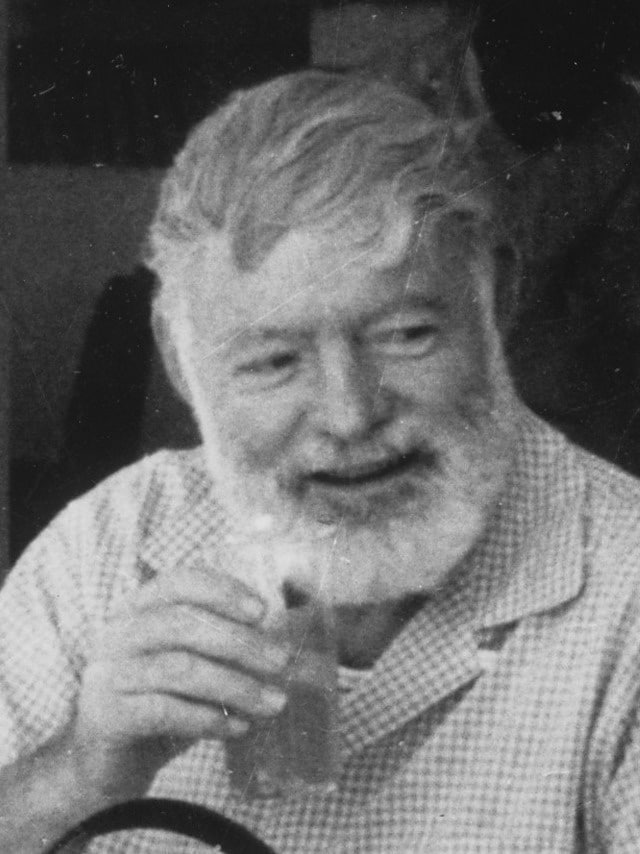Before there was Instagram and Twitter, hell, before Hollywood created celebrities, there was Ernest Hemingway. It’s been nearly a hundred years since Hemingway published his first collection of short stories, In Our Time, but his legacy lives on.
Although many consider him one of America’s finest writers, Hemingway’s 22 years in Cuba were the longest he lived anywhere. Perhaps that is why he has long been associated with cigar life. However, the man who would affectionately become known as “Papa” was not an avid cigar smoker.
But, of course, he smoked. It isn’t every day a company like Arturo Fuente names a line of cigars after you. But it was Hemingway’s lifestyle -fishing, hunting, and drinking- and his long connection to Cuba that has made him a cigar world icon.
Here’s a look at a 20th Century titan and a time when popularity consisted of talent and insight into the human condition rather than “likes” and “followers.”
World War I and Writing Life
Ernest Hemingway was born in Oak Park, Illinois, in 1899. He would famously call the Chicago suburb a town of “broad lawns and narrow minds.” However, he learned to hunt and fish early on trips to Michigan. These experiences would become the seed material for his famous Nick Adams stories.
He began creating his own myth before he went overseas during World War I. When he tried enlisting, the U.S. Army rejected him due to his bad eyesight. Hemingway exaggerated the details of this circumstance, a habit he continued for the rest of his life. He volunteered to drive an ambulance for the Italian army and arrived on the Western Front in 1918. Soon after, he was wounded by mortar fire and awarded the Italian War Merit Cross.
Hemingway spent six months recuperating from severe shrapnel wounds and fell in love with the attending nurse Agnes van Kurowsky. Unfortunately, she would ultimately reject Hemingway. Nevertheless, the experience would inspire Hemingway’s second novel and one of the greatest war novels ever written, A Farewell to Arms.
Hemingway was only 18 when he was wounded. However, his experiences in the war would define his generation and shape his writing.
Hemingway spent much of the 1920s in Europe with other expatriates like Gertrude Stein and F. Scott Fitzgerald. During those years, Hemingway wrote his first novel, The Sun Also Rises, a masterful depiction of Spanish bullfights and the angst many young men felt following the first world war. Stein, one of Hemingway’s many mentors, would name the young writers and thinkers of the era the “lost generation.”
Hemingway’s first novel captured the world’s attention. His account of the running of the bulls in Pamplona, Spain, added to his legend. He would remain an avid fan of the spectacle his entire life.
By the time he returned to the United States and lived in Key West, he had married his second wife. He would marry four times and father three children.
He experienced as much success as he did failures as a writer. Despite his messy personal life and excessive drinking, he dedicated himself to the craft of writing. An early riser all of his life, he devoted mornings to writing. He spent afternoons fishing or drinking with friends.
A lifelong adventurer and outdoorsman, Hemingway would enhance his myth by taking several trips to Africa to hunt big game. This lifestyle and time in Cuba tied him to cigar life.
The Influencer: Ernest Hemingway
Hemingway’s journalistic style, marked by simple declarative sentences, would influence several generations of writers and countless imitators.
It is difficult for the younger crowd to imagine a writer as a celebrity. Still, during the mid-20th century, Hemingway was one of the most recognizable people in the world. He graced the cover of Time magazine several times. He also was a war correspondent during WWII and penned a novel about the Spanish Civil War, For Whom the Bell Tolls.
In 1954, Hemingway reached the pinnacle of his art by winning the Nobel Prize in Literature. The acclaim came after writing the novella The Old Man and the Sea, which also won the Pulitzer Prize in 1953.
The story of an aging fisherman who does battle with a marlin off the coast of Cuba has become a classic and one of Hemingway’s best-known and most beloved final works.
Although he approved of Fidel Castro’s revolution, the threat of nationalizing America and foreign-owned properties forced Hemingway to leave his beloved Cuba. He moved back to the United States in 1961. His physical and mental health ailing, Ernest Hemingway committed suicide later that year.
Ernest Hemingway’s Legacy
Like any great artist, Hemingway struggled with self-doubt and self-destruction. People knew him for his drinking almost as much as his writing. In the end, the man could not outlive the myth. He gained a reputation as a bully, a neglectful father, a terrible friend, and an unfaithful husband.
His reputation has taken some hits recently, yet his writing lives on, and he continues to fascinate the literary world and beyond. Ken Burns’ recent documentary looks honestly at the man behind the myth. It provides new insights about the man known as “Papa.”
Like a fine premium cigar, Hemingway was complex. That may be why Arturo Fuente honored him by creating a line of cigars in his name. The perfecto Cameroons are a medium to mild blend and come in various sizes and names that correlate with writing (The Short Story & Best Seller).
Reading and smoking make a great combination. So perhaps it’s time to kick back with a premium cigar and enjoy one of Ernest Hemingway’s classics.
Photo Credit: National Archives and Records Administration, Public domain, via Wikimedia Commons


